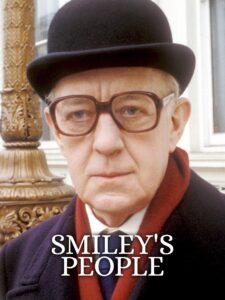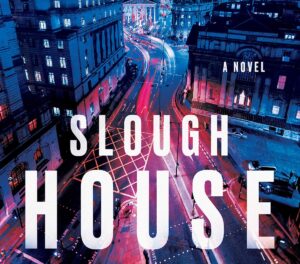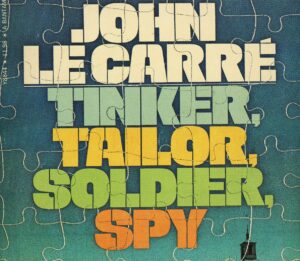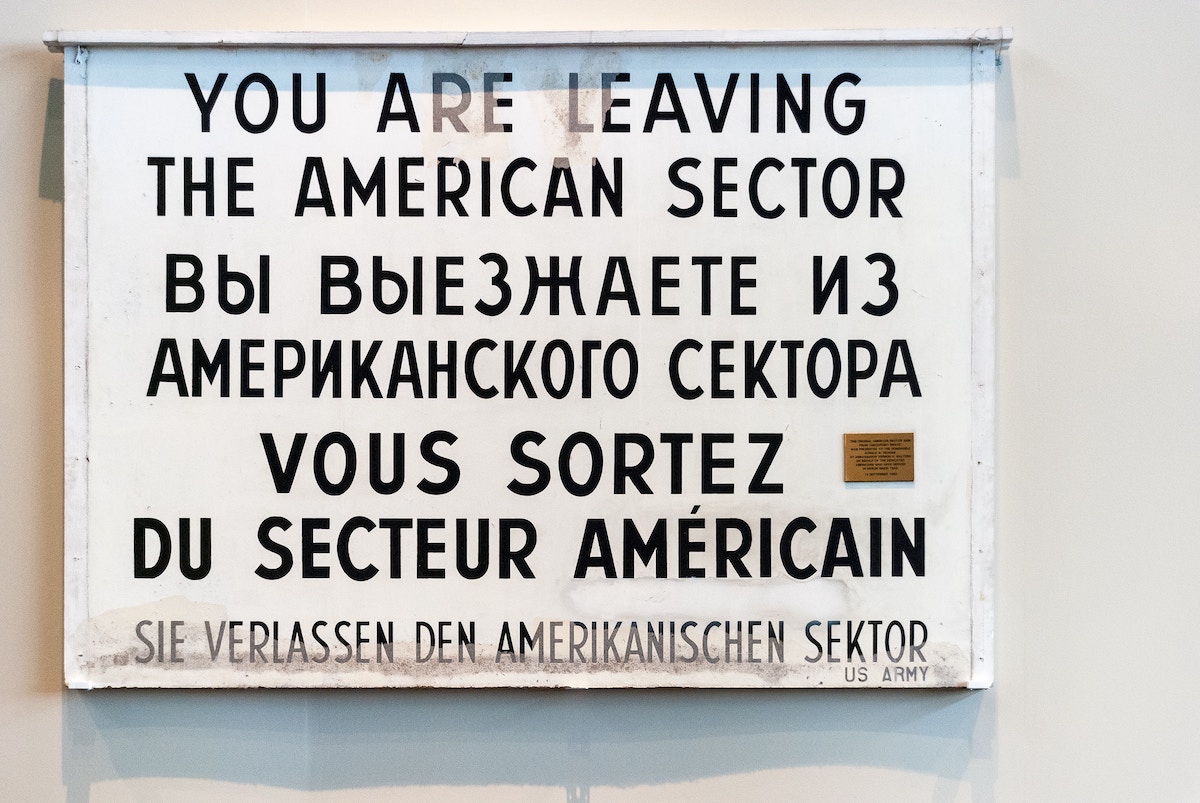Unlock the mysteries of the spy genre and dive into its captivating history, development, and diverse subgenres, accompanied by examples of influential books and authors.
The spy genre has always held a magnetic allure, drawing readers into a shadowy world of espionage, intrigue, and danger. The thrill of following covert agents as they navigate perilous missions and unravel high-stakes conspiracies has made spy novels an enduring favorite among readers. In this extensive article, we will explore the captivating realm of spy fiction, tracing its origins, examining its evolution, and exploring the various subgenres that have emerged over time.
Understanding the Spy Genre
At its core, the spy genre revolves around the clandestine activities of spies, intelligence operatives, and secret agents. These characters often work for government agencies, taking on covert missions to gather classified information, thwart enemies, and protect national security. The genre is characterized by a palpable sense of tension, suspense, and deception, making it a gripping reading experience.
History and Development of Spy Novels
The roots of the spy genre can be traced back to ancient times, with tales of espionage and undercover operations found in historical records. However, it was during the late 19th and early 20th centuries that spy fiction as we recognize it today began to take shape.
1. Early Pioneers
One of the earliest and most influential spy novels is “The Spy” by James Fenimore Cooper, published in 1821. Set during the American Revolution, the novel follows the adventures of Harvey Birch, a spy for George Washington’s army. Cooper’s work laid the groundwork for future spy narratives by introducing readers to the archetype of the cunning and resourceful spy.
2. The Espionage Boom of the 20th Century
The early 20th century witnessed a surge in spy fiction, coinciding with significant geopolitical events like World War I and the Russian Revolution. Notable authors of this period include W. Somerset Maugham with “Ashenden: Or the British Agent” (1928), a collection of short stories based on his experiences as a British intelligence agent during World War I.
3. The Master of Espionage: Ian Fleming
No discussion of spy novels would be complete without mentioning Ian Fleming and his iconic creation, James Bond. Fleming’s first Bond novel, “Casino Royale” (1953), introduced readers to the charismatic and suave British spy, James Bond, also known by his code number, 007. The series went on to become a global phenomenon, influencing countless spy novels and creating an enduring spy subgenre.
Subgenres of Spy Novels
Over time, the spy genre has diversified into several subgenres, each offering a unique take on the world of espionage. Let’s explore some of the most prominent subgenres that have captivated readers worldwide.
1. Cold War Espionage
As the Cold War between the United States and the Soviet Union gripped the world, spy novels set in this era gained immense popularity. Authors like John le Carré rose to prominence with works like “The Spy Who Came in from the Cold” (1963), which presented a more realistic and gritty portrayal of espionage, departing from the glamorous image created by James Bond.
2. Techno-Thrillers
With the advent of advanced technology, spy novels evolved to incorporate high-tech gadgets, cyber espionage, and digital warfare. Tom Clancy’s “The Hunt for Red October” (1984) is a seminal work in this subgenre, blending intricate technical details with intense action and suspense.
3. Historical Espionage
Combining elements of historical fiction with espionage, this subgenre takes readers back to pivotal moments in history. Alan Furst’s “Night Soldiers” (1988) is a standout example, immersing readers in the intrigue of pre-World War II Europe.
4. Spy Comedy
While the spy genre often delves into serious and high-stakes scenarios, spy comedies inject humor and wit into espionage tales. Books like “Our Man in Havana” (1958) by Graham Greene offer a delightful mix of espionage and satire.
5. Espionage in Fantasy and Science Fiction
This subgenre combines the elements of espionage with fantastical or futuristic settings. A prominent example is “The Bourne Identity” (1980) by Robert Ludlum, where a spy with amnesia seeks to uncover his true identity in a world of international conspiracies.
Influential Spy Novels and Authors
Throughout the history of the spy genre, numerous books and authors have left an indelible mark on readers and the literary world. Let’s delve into some of the most influential spy novels and the creative minds behind them.
1. “Tinker, Tailor, Soldier, Spy” – John le Carré
Published in 1974, “Tinker, Tailor, Soldier, Spy” is a masterpiece by John le Carré, known for his nuanced character development and intricate plots. The novel follows George Smiley, a retired intelligence officer, as he is tasked with uncovering a mole within the British Secret Intelligence Service. Le Carré’s work is praised for its realism and the moral ambiguity of the characters.
2. “The Day of the Jackal” – Frederick Forsyth
Released in 1971, “The Day of the Jackal” by Frederick Forsyth is a gripping tale of an assassin hired to eliminate Charles de Gaulle, the President of France. Forsyth’s meticulous research and attention to detail lend authenticity to the story, earning it a place among the finest spy thrillers ever written.
3. “Red Sparrow” – Jason Matthews
Jason Matthews’s “Red Sparrow” (2013) delves into the world of modern espionage and the dangerous game of intelligence operations between Russia and the United States. The novel introduces readers to Dominika Egorova, a former ballerina turned Russian intelligence officer, who becomes entangled in a web of intrigue and manipulation.
4. “Eye of the Needle” – Ken Follett
Published in 1978, “Eye of the Needle” by Ken Follett centers around a German spy, Henry Faber, codenamed “The Needle,” who attempts to deliver crucial information to the Nazis during World War II. Follett’s storytelling prowess and skillful blending of historical events with fiction earned the novel widespread acclaim.
5. “The Spy Who Came in from the Cold” – John le Carré
A true classic in the genre, “The Spy Who Came in from the Cold” reappears, reflecting John le Carré’s enduring influence. This novel delves into the moral complexities of espionage, as British agent Alec Leamas navigates a dangerous mission on the Berlin Wall during the Cold War.
6. “The Bourne Identity” – Robert Ludlum
“The Bourne Identity” introduced readers to Jason Bourne, an amnesiac operative with exceptional skills and a mysterious past. Published in 1980, the novel revolutionized the spy genre with its fast-paced action and psychological depth.
7. “The Hunt for Red October” – Tom Clancy
Tom Clancy’s debut novel, “The Hunt for Red October,” catapulted him to fame and defined the techno-thriller subgenre. The story revolves around a Soviet submarine captain attempting to defect to the United States with his advanced nuclear submarine.
Unraveling the Spy Genre
The spy genre’s enduring popularity lies in its ability to transport readers to the edge of their seats, immersing them in a world of secrecy, intrigue, and danger. From the early pioneers like James Fenimore Cooper to the modern masters like John le Carré and Jason Matthews, spy novels have continuously evolved, adapting to contemporary geopolitical landscapes and technological advancements.
Whether readers crave historical espionage, thrilling techno-thrillers, or mind-bending spy fantasies, the genre offers a plethora of options to satiate their appetite for excitement.
- Smiley’s People: Unraveling Intrigue in Le Carré’s Masterpiece
 Introduction: Unveiling the Craft of John le Carré Renowned for his mastery of espionage fiction, John le Carré remains an icon in the realm of thriller literature. With a penchant for intricate plots, compelling characters, and moral ambiguity, le Carré captivates readers with his rich narratives and sharp prose. Among his notable works, “Smiley’s People” …
Introduction: Unveiling the Craft of John le Carré Renowned for his mastery of espionage fiction, John le Carré remains an icon in the realm of thriller literature. With a penchant for intricate plots, compelling characters, and moral ambiguity, le Carré captivates readers with his rich narratives and sharp prose. Among his notable works, “Smiley’s People” … - Unveiling the Secrets of Slough House: Espionage, Intrigue, and the Underbelly of Intelligence Agencies in 8 Novels
 Unlock the world of espionage, deceit, and morally ambiguous characters in the gripping Slough House series by Mick Herron. Dive into the intricacies of this literary gem, exploring its plot, key characters, themes, and cultural impact. Discover what inspired the author and find similar books to satiate your craving for thrilling spy narratives. Are you …
Unlock the world of espionage, deceit, and morally ambiguous characters in the gripping Slough House series by Mick Herron. Dive into the intricacies of this literary gem, exploring its plot, key characters, themes, and cultural impact. Discover what inspired the author and find similar books to satiate your craving for thrilling spy narratives. Are you … - Unmasking Espionage: The Intriguing World of George Smiley Novels
 Discover the captivating universe of espionage fiction through the eyes of George Smiley, a legendary British spymaster. Delve into the history, evolution, and notable authors of this genre. Espionage fiction, a thrilling and enigmatic genre, has taken readers on covert missions, unraveling international mysteries for decades. At the heart of this genre lies George Smiley, …
Discover the captivating universe of espionage fiction through the eyes of George Smiley, a legendary British spymaster. Delve into the history, evolution, and notable authors of this genre. Espionage fiction, a thrilling and enigmatic genre, has taken readers on covert missions, unraveling international mysteries for decades. At the heart of this genre lies George Smiley, … - 20 Captivating Spy Novels that Redefined Espionage Fiction
 Discover the captivating realm of espionage through these 20 iconic spy novels that have shaped the genre’s landscape. Delve into the history, evolution, and notable authors who have crafted tales of intrigue, deception, and suspense. Defining the Espionage Genre: Secrets Unveiled The espionage genre, characterized by its thrilling narratives of spies, undercover agents, and covert …
Discover the captivating realm of espionage through these 20 iconic spy novels that have shaped the genre’s landscape. Delve into the history, evolution, and notable authors who have crafted tales of intrigue, deception, and suspense. Defining the Espionage Genre: Secrets Unveiled The espionage genre, characterized by its thrilling narratives of spies, undercover agents, and covert …



